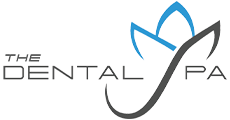Oral Hygiene in Bala Cynwyd PA

Oral hygiene refers to the practices that help maintain the health of your teeth and gums. This includes brushing, flossing, using mouthwash, and regular visits to the dentist. But why is it so important? Well, let's break it down.
First and foremost, good oral hygiene in Bala Cynwyd PA helps prevent tooth decay. When we eat or drink, bacteria in our mouths produce acids that can erode enamel and create cavities. By properly cleaning our teeth daily, we remove this harmful plaque buildup and reduce the risk of dental caries.
Maintaining Oral Hygiene In Bala Cynwyd PA
Maintaining oral hygiene helps keep gum disease at bay. On the other hand, if plaque isn't removed regularly, it can harden into tartar which irritates the gums and causes inflammation. This can progress into gingivitis or even periodontitis if left untreated, leading to gum recession and potential tooth loss.
Furthermore, practicing proper oral care contributes to fresh breath! No one wants dragon breath when talking with friends or colleagues. Regular brushing removes food particles trapped between teeth that can cause bad odors.
Lastly, research suggests a link between poor oral health and various systemic diseases like heart disease and diabetes. While more studies are needed to fully understand these connections, taking care of your mouth may have broader implications for overall well-being.
Maintaining good oral hygiene is crucial for preventing tooth decay and gum disease while promoting fresh breath and potentially impacting overall health. So don't neglect those pearly whites — give them the TLC they deserve!
Bala Cynwyd PA Oral Hygiene FAQs
The Dental Spa
141 Montgomery Ave
Bala Cynwyd PA 19004
OFFICE HOURS
Monday
8:00am - 8:00pm
Tuesday
8:00am - 6:00pm
Wednesday
8:00am - 5:00pm
Thursday
8:00am - 6:00pm
Friday
8:00am - 4:00pm
Saturday & Sunday
Closed


